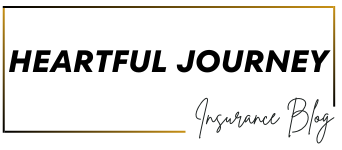Mortgage insurance allows borrowers to put down less than 20% and still qualify for loans, typically with payments for this insurance included within your monthly mortgage payment.
This insurance provides lenders with protection against financial loss and lowers risk in providing mortgage loans with smaller down payments. Once you reach 22% equity in your home, this coverage may be cancelled.
PMI
As its name implies, PMI protects mortgage lenders against losses should you default on your loan. Typical costs range between 0.3% and 1.5% of the original loan amount each year; these may vary depending on factors like your credit score and loan-to-value (LTV) ratio of your property purchase. PMI rates also depend on which type of mortgage policy you hold as well as any discounts or rebates provided by insurance providers for that policy.
There are two primary forms of PMI – borrower paid and lender paid. Most borrowers pay their PMI monthly as part of their mortgage payment; however, you may have the option of either making one upfront lump sum payment as an upfront mortgage insurance premium, or financing it through your loan payments. You’ll find details on lender-paid PMI in Loan Estimate and Closing Disclosure mortgage documents.
Assuming you have good credit, the higher your credit score will usually result in lower private mortgage insurance (PMI) premium rates; mortgage insurers take your financial profile into consideration when setting rates; higher scores indicate less risk and reduced chances of default.
Some government-backed loans such as those provided by the VA and USDA don’t require PMI while still offering low down payment options, while those insured by the Federal Housing Administration (FHA) require PMI with even 20% down payments; their PMI rules allow gift funds or seller contributions toward your down payment, helping buyers bypass paying PMI premiums altogether.
How long and what amount you must pay PMI can vary, depending on the down payment you provide. On conventional mortgages, cancellation of PMI typically occurs once your principal balance reaches 78% of original loan amount; that is when most equity has been built to justify dropping it from your monthly payments.
Mortgage insurance rules differ by state; generally speaking, however, if your loan exceeds 80% of its purchase price you may be required to get mortgage insurance from your lender. Rules vary by state, so it’s best to consult with your lender on which policy would best serve your interests. In many instances, making a larger down payment on your purchase could help reduce or even eliminate mortgage insurance payments altogether; its advantages often outweigh their costs. However, if you cannot afford a large down payment and must opt for a conventional mortgage instead, paying additional PMI costs will become part of homeownership. There are ways you can manage these additional expenses more comfortably such as setting up an escrow account for mortgage insurance payments or decreasing your initial loan-to-value ratio.
MIP
FHA Mortgage Insurance Premium (MIP), also referred to as Private Mortgage Insurance (PMI), helps homebuyers who can’t afford the larger down payments required of conventional loans. Similar to PMI, FHA MIP protects lenders against losses should borrowers default on the loan and is both paid up front and annually – typically the upfront fee will be included into your loan while annual costs can be added directly into monthly mortgage payments ranging between 0.15-0.75% of your base loan amount depending on loan term length, LTV ratio and down payment amount.
FHA Mortgage Insurance Premiums typically cost less than PMI due to more flexible FHA loan requirements that allow borrowers with lower credit scores to qualify. Furthermore, seller contributions may help cover upfront portions of FHA MIP premiums.
FHA may cancel or waive Mortgage Insurance Premium (MIP), though homeowners still must pay an annual fee. Examples of when this might happen include when making a 20% down payment or when home values drop below loan balances; alternatively borrowers could request having MIP removed when refinancing to conventional loans with 20% equity in their property or reaching 11 years without needing refinancing again.
PMI (Private Mortgage Insurance) is often required on conventional loans with down payments below 20%, and must be included as part of the monthly mortgage payment. PMI represents an extra expense on top of principal, interest, property taxes and homeowners insurance in traditional loans.
Freddie Mac estimates that private mortgage insurance costs anywhere from $30-$70 per $100,000 borrowed per month in premiums, which must be added on top of principal and interest payments. Upfront premiums may be charged at closing and financed into the loan while annual premiums can be divided evenly and added onto each month’s payments.
Mortgage insurance (MIP) helps encourage lenders to provide mortgages to borrowers who wouldn’t otherwise qualify, yet its expense may dissuade some homebuyers. When selecting mortgage products that make the most sense for you, MIP costs should always be taken into consideration; some borrowers may consider paying mortgage insurance worth it when they gain savings with conventional loans; meanwhile others prefer waiting and saving enough money for a down payment that would allow them to obtain conventional loans without needing MIP – it all depends on what’s most important!



